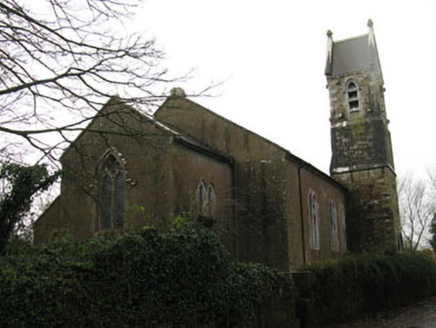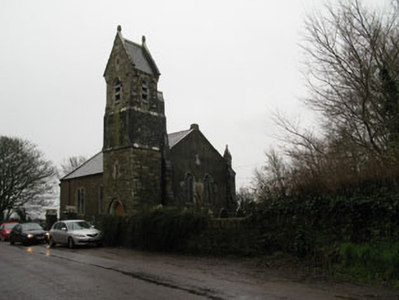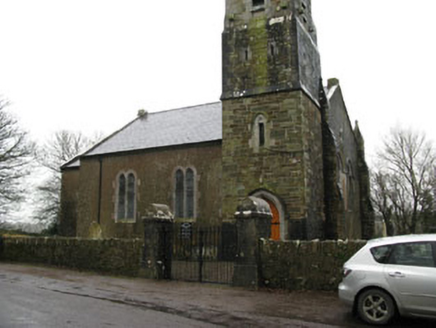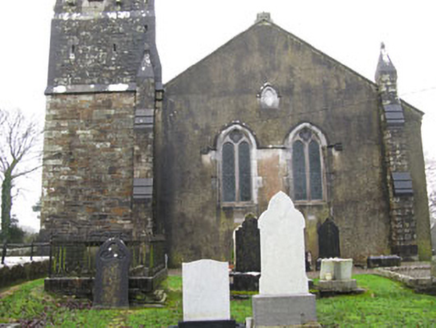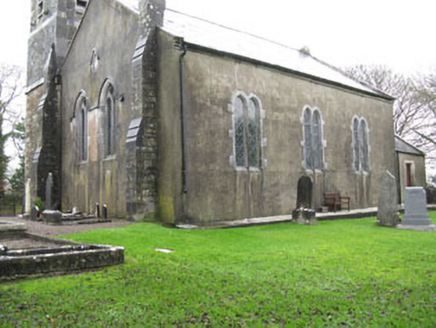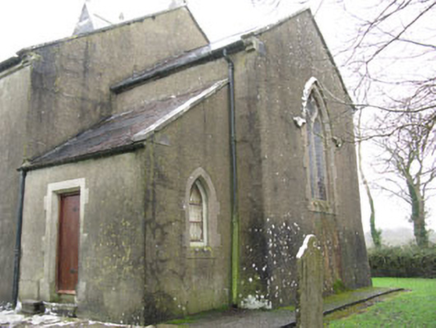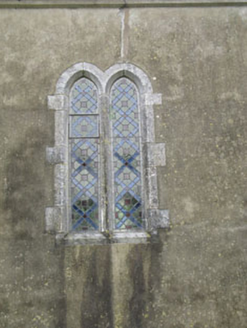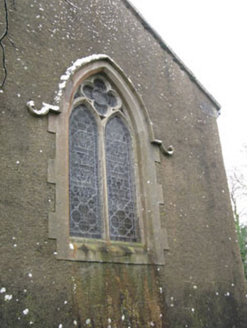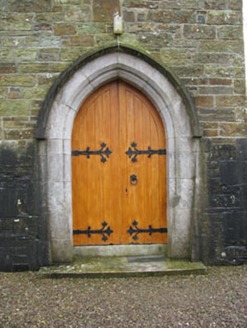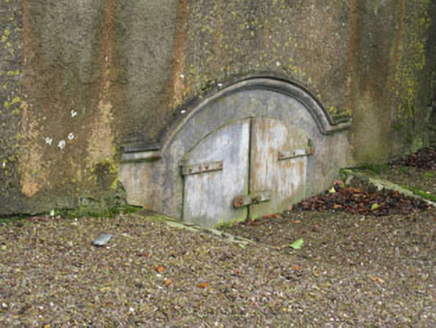Survey Data
Reg No
20909631
Rating
Regional
Categories of Special Interest
Architectural, Artistic, Social
Original Use
Church/chapel
In Use As
Church/chapel
Date
1810 - 1815
Coordinates
151839, 59247
Date Recorded
09/10/2009
Date Updated
--/--/--
Description
Freestanding double-height Church of Ireland church, built 1813, remodelled and extended c.1870 and1883, comprising three-bay nave with four-stage entrance tower to front (north), single-bay chancel to east and lean-to vestry to south of chancel. Pitched slate roofs with cut limestone gable copings, carved limestone finials to tower and nave extending from buttress to side (west) elevation of nave. Cast-iron rainwater goods throughout. Rendered walls with buttresses to side (west) elevation, dressed stone walls to tower having cut limestone stringcourses and projecting corbels to upper stage. Paired pointed arch window openings with limestone sills to nave, having cut limestone block-and-start surrounds. Pointed arch window openings with limestone sills to chancel and side (west) elevation of nave, having tooled limestone hood-mouldings, block-and-start surrounds and geometric tracery with quatrefoil overlights. Lead-lined stained-glass windows throughout. Blind diamond recess with hood moulding to gable of side (west) elevation. Pointed arch and square-headed openings to tower with hood-mouldings and louvers to upper stage. Pointed arch door opening with tooled limestone hood moulding to tower, having cut limestone surround and timber battened door with strap hinges. Segmental-headed vault opening with tooled limestone hood-moulding to rear elevation, having cast-iron door. Square-headed door opening to vestry with limestone block-and-start surround, limestone step and timber battened door. Rendered square-profile gate piers with pointed caps flanking replacement gate. Flanked by rubble stone boundary wall. Recumbent and upstanding grave markers to surrounding graveyard.
Appraisal
A handsome church, occupying a prominent roadside position in a rural area. Though retaining fabric from the early nineteenth centuries, the building was altered and extended in the late nineteenth century in the fashionable Gothic Revival style. The tower is a particularly handsome later addition by renowned Cork architect Henry Hill, which adds much to its character. Fine craftsmanship is apparent in the stone work, stained glass and wrought-iron. The graveyard retains grave markers from several centuries and adds to its setting and context.
